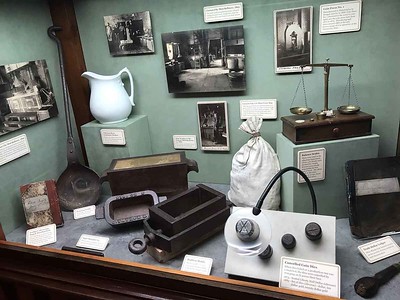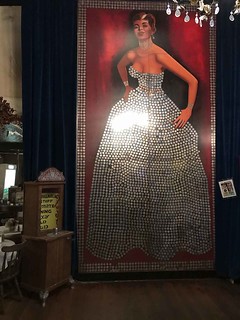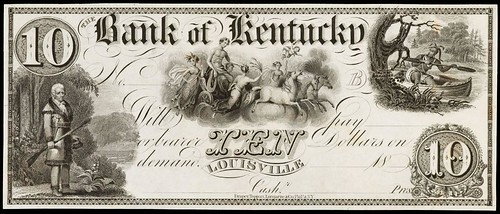
PREV ARTICLE
NEXT ARTICLE
FULL ISSUE
PREV FULL ISSUE
LOOSE CHANGE: JULY 11, 2021Here are some additional items in the media this week that may be of interest. -Editor Jay Turner published an article on PCGS.com about the Nevada State Museum at the site of the Carson City Mint -Editor
To read the complete article, see:
Another Jay Turner article on PCGS.com discussed a visit to Virginia City, NV and the landmark Silver Queen Hotel. -Editor
Once a grand hotel that at one time had two bars, a café, 80 slot machines, a wedding chapel, and a hotel, the best attraction was the Silver Queen portrait. Designed by Carroll and Jerry Eaton as a tribute to Virginia City's once-great silver mining industry, the Silver Queen was originally made up of 3,261 silver dollars and 28 gold double eagles. At some point it appears that the coins were replaced, with no gold being found today, but the monument is still an impressive site. Coin collector will find it well worth the few minutes to stop in take a few photos. Virginia City may not be a mint or museum on the radar of many numismatic lovers or collectors, however it does allow one to step back and connect to an important part of history that is directly related to the history of the United States, its monetary policy, and its coinage. It's a historical landmark that still survives today, allowing a person to be at the place where so many people made their fortunes or survived working mining. It's a nice day trip where you can enjoy a drink at the bar, some ice cream, candy, BBQ, and history.
To read the complete article, see:
The latest CoinWeek Podcast features Mike Markowitz speaking on the coins of the Middle Ages. -Editor CoinWeek Podcast #161: Let's Get Medieval – Mike Markowitz on Coins of the Middle Ages This Week, CoinWeek Ancients writer Mike Markowitz gets medieval. I'd say he gets medieval on that As – but Ases are Roman coins and not medieval, so I can't say that. Moving on… What is it about Medieval coins and medieval art that makes them so different than their ancient counterparts? And specifically, why are they so UGLY? Mike digs into the topic and offers some interesting insights that might have you looking at this specialty area in a new light.
To listen to the podcast, see:
Kentucky Colonel Dennis Tucker published an article on CoinUpdate about banknotes from that state. -Editor Kentucky's state-chartered banks from the early 1800s to the 1860s were authorized to issue their own paper money, backed by the value of their assets. More than a dozen banks had their headquarters in Louisville or opened branch offices there. This gives collectors many colorful Louisville banknotes to hunt down and marvel at. Their beautifully engraved and creative vignettes are among the most artistic in American banking history.
One such institution was the
To read the complete article, see:
Kavan Ratnatunga passed along this classic study of inflation. Thanks. -Editor Over time, the Tooth Fairy Index™ (TFI) shows that the value of a lost tooth is closely related to the U.S. economy. Much like Punxsutawney Phil's Groundhog Day weather prognostication, the Original Tooth Fairy Poll has generally been a good barometer of the overall direction of the economy. In fact, for 16 of the past 19 years, the trend in average giving has tracked with the movement of the S&P 500.
To read the complete article, see:
Wayne Homren, Editor The Numismatic Bibliomania Society is a non-profit organization promoting numismatic literature. See our web site at coinbooks.org. To submit items for publication in The E-Sylum, write to the Editor at this address: whomren@gmail.com To subscribe go to: https://my.binhost.com/lists/listinfo/esylum All Rights Reserved. NBS Home Page Contact the NBS webmaster 
|





